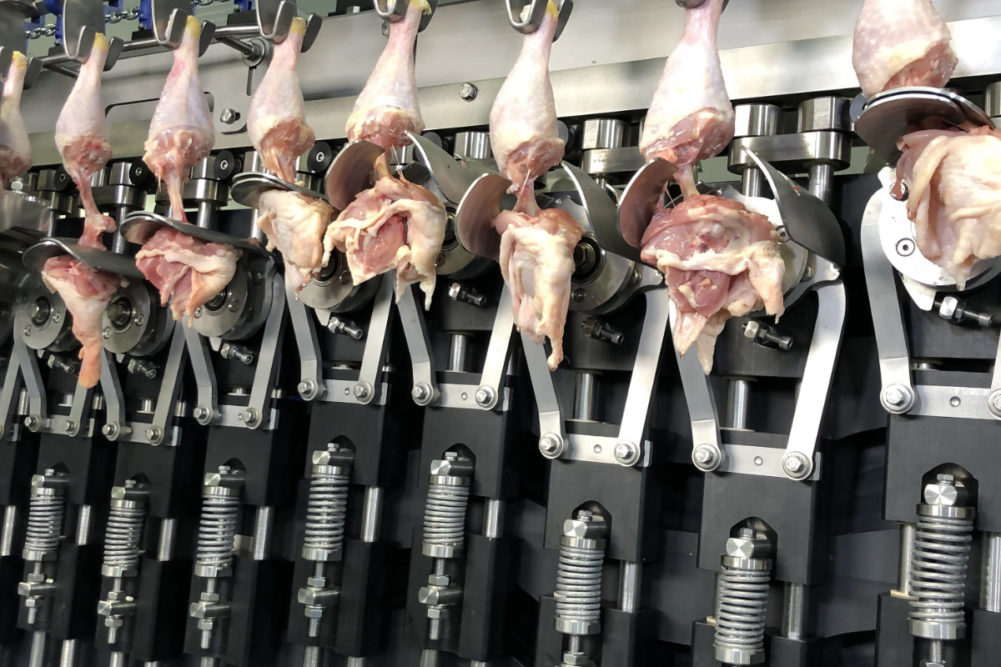DENVER – The coronavirus pandemic has underscored the importance of agriculture and other industries that are central to rural America, but the crisis also has brought about unexpected challenges particularly in the animal protein segment, according to Keeping Us Connected, Our Lights On, and Our Pantries Full, a new quarterly report from the Knowledge Exchange division of CoBank.
“This quarter will largely define the next year in terms of the economy and how severe the damage caused by the coronavirus will be,” said Dan Kowalski, vice president, Knowledge Exchange, CoBank. “Nearly everyone will be impacted to varying degrees and the pace of the recovery will be uneven. But the economy had been on good footing and it’s entirely possible that we can get back to reasonable strength within a few quarters.”
The spread of the coronavirus to the United States sparked a sharp increase in home cooking. Will Sawyer, lead economist, animal protein for CoBank, said the US poultry industry has benefited from this trend. Chicken production increased 7.7% through the first two months of 2020 driven by 5.5% more birds and a 2% increase in bird weights.
“The price of chicken breast, which is almost entirely sold domestically, has jumped in the last month beyond the expected seasonal increase,” Sawyer wrote. “With much of US ordered to stay home, foodservice demand is in question. The degree to which that demand shifts to retail will dictate how long these positive prices remain.”
Less positive is the outlook for poultry exports. Analysts forecasted large exports in 2020, but the coronavirus pandemic has dampened that expectation. CoBank expects the coronavirus pandemic will disrupt US export potential until the virus is under control.
“We expect China’s chicken imports from the US to increase this spring and summer as the coronavirus pandemic comes under control there,” Sawyer said. “However, all US protein processors will face two countervailing challenges in the coming months: risk of plant reductions/shutdowns due to worker illness, and cold storage facilities reaching capacity. Storage was filling up before the pandemic, and storage of cuts destined for foodservice only exacerbates the situation.”
While domestic demand for poultry has increased, the outlook for beef in 2020 is uncertain due to the coronavirus impact on the foodservice industry. The New York Times reported that, as of April 2, at least 297 million people were urged to stay home to slow the spread of the coronavirus. Some foodservice operators switched to curbside pickup and delivery services while others were forced to shut down.
“Beef prices have set record premiums over pork and chicken in recent years in the midst of the longest economic expansion in US history,” Sawyer said. “Now that the coronavirus has nearly halted restaurant business and travel, the 2020 outlook for demand is in question.”
The downturn comes after the beef industry managed through the temporary closure of Tyson Foods’ slaughter plant in Holcomb, Kan. In August of 2019, a fire halted cattle shipments and slaughter operations at the plant. This meant the fire shut down more than 30,000 head per week of capacity representing 6% of total US processing capacity.
“Now that the facility is back online to full production, beef supplies have greatly expanded,” Sawyer said. “So far this year, weekly production is up 3.5%. Cattle weights have increased 2% to 3% after 2019’s muddy and difficult feeding conditions and both steer and heifer weights are way up. We continue to expect beef production to grow 2% in 2020, which will test domestic consumers’ willingness to pay the premium prices of 2018 and 2019.”
CoBank said that April live cattle futures have fallen about 25% since mid-January and have not yet shown signs of a bottom. The sharp drop is the market response in part to risk that the virus will reduce processing throughput.
“On March 30, that risk became reality when a JBS facility in Pennsylvania cut back production due to staff illness,” Sawyer said.
Hog producers are expected to realize negative margins through April, CoBank said. Margins should turn into positive territory this summer.
For hog producers, 2020 may be a break-even year despite strong exports that kicked off the year. China’s demand for US pork has set export records, but it hasn’t led to strong prices or profit margins, CoBank said.
“In both of the last two months of trade data (December and January) the US set record pork exports of nearly 700 million lbs each month, accounting for 26% to 28% of domestic pork production,” Sawyer said in the report. “Despite exports increasing 30% to 40% over the same period the year before, hog prices are only up a few percent above last year.”
CoBank expects pork production to increase 3.5% for the year overall, however, domestic disappearance of pork will be relatively flat. This will prevent hog prices and producer margins from seeing significant gains.


